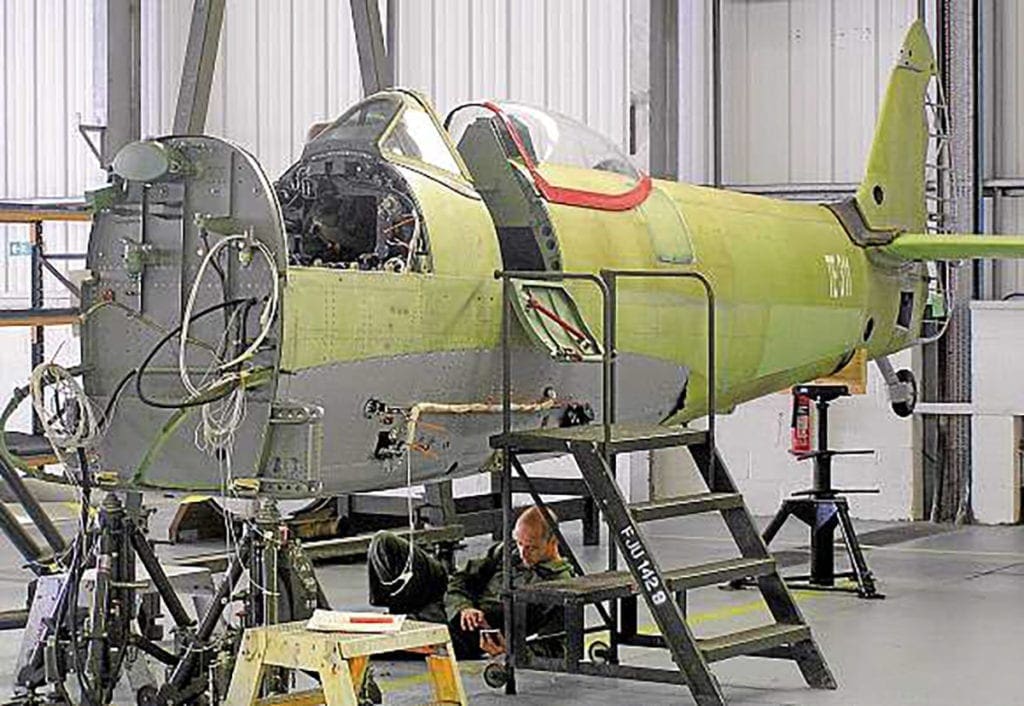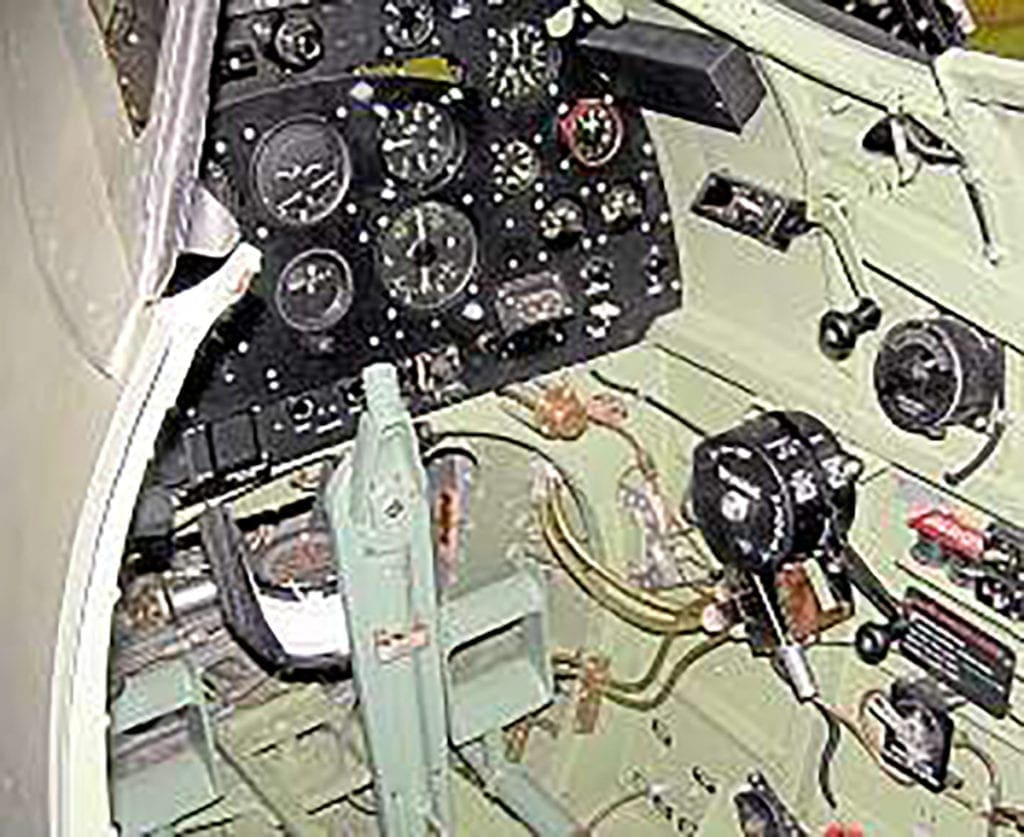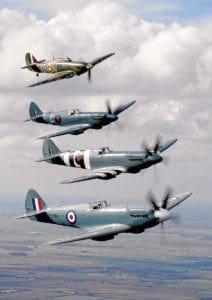Louise Blackah presents an update of a low-back Spitfire XVI currently under restoration to fly with the RAF.

The Battle of Britain Memorial Flight has now been displaying across the country, bringing its own unique nostalgia to the public for over 50 years. However, it has been more than 10 years since the Flight has had a new addition to the airworthy fleet. This is shortly to change with the completion of Spitfire XVI TE311, an ongoing restoration project, which, after seven years of voluntary labour, is now really beginning to actually look like an aircraft. Visitors to the Flight are able to recognise the fuselage as that of a late mark Spitfire and anticipation grows with the wait for the wings to be refabricated and fitted. TE311 completed its initial handling trials in 1946 and was allocated to 39 Maintenance Unit in the same year. Its service record’s last entry was made in 1955 when the Spitfire was allocated to ‘RAF Station Tangmere for display’. After this, the aircraft drifted into disrepair as it was used as a gate guardian at RAF Benson, Oxfordshire, and then joined the RAF Exhibition Flight, touring as far as Poland. An exhibition aircraft would regularly have its wings removed in order to be loaded onto a trailer for ease of movement.

This was, naturally, detrimental to the aircraft’s condition. In 1999, the decision was made to dispose of TE311 along with fellow Exhibition Flight Spitfire XVI TB382; however, the aircraft were first sent to BBMF with a view to recovering any items that could be used as spares. It was noted by the BBMF engineers that many items were missing from both aircraft, especially TE311, and the overall condition of them was extremely poor due to time spent on the exhibition circuit – but TE311 was largely original. By 2002, all useful components had been stripped from the aircraft, including the wings. The engines were removed and one of them dismantled and the crankshaft and engine casing used in the repair of a Merlin 225, which was subsequently fitted as number three engine on Avro Lancaster I PA474. During the spares retrieval process, Chief Technician Paul Blackah MBE devised a plan to ensure the survival of at least one of the aircraft. After careful consideration, it was agreed that TB382 would be sacrificed and TE311 would be restored, due to its originality. Initially, the project was to restore the aircraft to a reasonable condition for static display purposes; however, from the start of the project, Paul ensured that everything was restored or replaced to flying specifications in case the MoD should at some point in the future give permission for the aircraft to fly.
At the beginning of 2003, the wings were sent to Airframe Assemblies on the Isle of Wight for repair and overhaul and the project began in earnest. However, due to the commitments of the Flight, it was stipulated that work on TE311 should be undertaken in personnel’s spare time only; and this reduced the amount of volunteers interested in working on the project to only a few – namely Cpl Clive O’Connell, who has since left the Flight, Cpl Andy Bale, electrician, and Paul, who was experienced on the airframe and who had undertaken previous restoration projects such as the Messerschmitt Bf 109G, commonly known as Black 6 (now on display at the RAF Museum London).
The next job was to send the fuselage to the paint shop to be stripped, so that the overall condition could be assessed properly. It was both a surprise and a bonus to discover that only four skin panels needed replacing due to corrosion and damage. The tail planes and fin were then sent to Airframe Assemblies for inspection and overhaul, a process that would take two years.

Meanwhile, back at BBMF, the small team stripped out the components from the fuselage and then they had to come up with a plan that would enable them to refurbish the fuselage without the use of a jig. The solution was to remove, clean or replace a maximum of only two ‘skins’ at any one time. Working from frame 19A, the work began, changing all magnesium rivets to hidominium as they went. After dealing with the skins, the frames were cleaned, repaired and repainted as necessar y and finally ever ything was riveted back into position. The process took four very long years, which brought the project up to 2005.


TAKING SHAPE
During the same year, the tail planes and fin returned to BBMF and were bolted onto the fuselage along with frame five, the engine bearer frame, and then a dummy engine was fitted. It was a slow process, but TE311 was beginning to take shape. With the addition of the overhauled cowlings and rails, all serviced at Coningsby, and with new fasteners fitted, TE311 was now a completed fuselage that required fitting out internally with its major systems. Andy set about fitting the electrics and the instrument panel brought the cockpit to life. Together, they overhauled the seat and then fitted the flying controls, trim cables and the overhauled control column. Due to the winter servicing commitments and flying season schedule on BBMF, the work progressed slowly and it was impossible to establish a regular working routine. Lunchtimes, breaks, late evenings and the odd day over the weekend was the only time that could be spared for the project. Enthusiasm waned on occasions as TE311 stood like a bride in waiting, reminding the two men of how far they still had to go; but their moral was boosted when the new perspex arrived and was fitted onto the existing canopy frame, followed by new armoured glass and perspex for the windscreen.

In 2007, because of the lengthy wait for pipes being made for the hydraulic and pneumatic systems, the decision was taken to paint the fuselage. No.74 Squadron markings were chosen, as this squadron saw operational service in the Netherlands with low-back Mk.XVIs.
On its return to the hangar, with the arrival of an airworthy overhauled Merlin 266 engine, TE311 was beginning to attract more attention, not only from the general public, but also from the current fighter pilots who were eager to fly her as soon as she was airworthy. The first wing arrived at Coningsby in January 2010, with the other due to follow suit by the summer. By the end of 2010, it was hoped to have completed the pneumatic and hydraulic systems, with the fuel system well under way.
This project may be progressing in ‘slow time’, but progressing it is and before long BBMF will be thrilling the crowds with its new recruit. We can’t wait!



